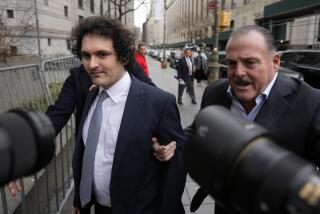More Than 99% of Depositors Repaid by FSLIC in 2 Costa Mesa S & L Failures
- Share via
Federal regulators have nearly completed the job of repaying a record $1.35 billion to insured depositors at two failed Costa Mesa thrifts that were closed June 6.
More than $1.3 billion has been returned to depositors who had 15,442 accounts, or 99.4% of all accounts at American Diversified Savings Bank and North America Savings & Loan, said David Loveday, a spokesman for the Federal Savings & Loan Insurance Corp.
In the process, regulators have laid off 67 of 204 employees at American Diversified and 19 of 29 employees at North America Savings. The remaining workers will help the FSLIC liquidate the assets of the two S & Ls, Loveday said.
Regulators expect to recoup only $420 million from the sale of assets.
Customers with deposits exceeding the FSLIC insured limit of $100,000 per account must wait with general creditors for the liquidation to get a portion of their excess deposits. Regulators expect to recover about 30 cents on the dollar.
So far, 380 accounts have a total of $1.65 million in uninsured funds, and another 421 accounts have yet to be processed, Loveday said.
One of those depositors apparently losing money is the San Bernardino Redevelopment Agency, which put $94,583 into each of two certificates of deposit at American Diversified and $93,748 into each of two CDs at North America Savings.
The agency got a total refund check for $200,000 representing combined accounts at each thrift. FSLIC said it was denying the agency’s claim of having each account separately insured, said Craig Graves, the San Bernardino city treasurer.
The city will appeal the FSLIC’s ruling and also may sue Astorwood Financial in Los Angeles, a funds manager that placed $16 million in agency and city money in “double accounts” at 83 S & Ls around the nation. Graves said 38 of the S & Ls turned out to be insolvent, some in worse shape than American Diversified and North America Savings.
The accounts have since been reduced below the insured limit, and the excess money has been moved to other institutions, Graves said.
More to Read
Inside the business of entertainment
The Wide Shot brings you news, analysis and insights on everything from streaming wars to production — and what it all means for the future.
You may occasionally receive promotional content from the Los Angeles Times.










